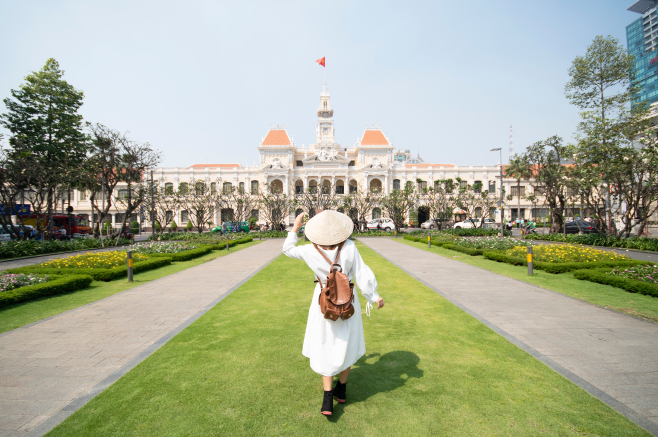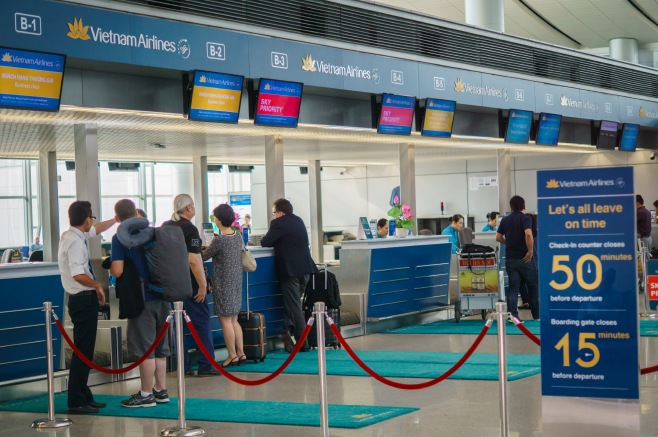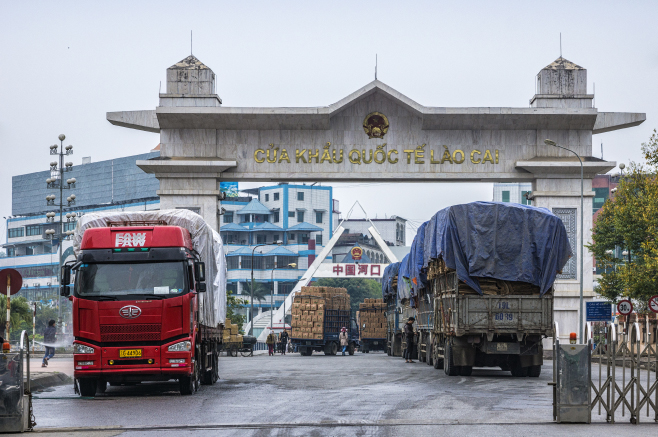Vietnam Border Crossings for eVisa Holders
If you're preparing for a Vietnam trip, it's crucial to grasp the legal methods of crossing the country's borders. This involves grasping the visa prerequisites and processes at different entry junctures.
This piece serves as an uncomplicated handbook for entering Vietnam using a Vietnam eVisa. We'll encompass everything from diverse Vietnam border crossings to traveling to this country from neighboring nations in a straightforward manner.
The Basics of Vietnam eVisa
Firstly, let's delve into the fundamentals of Vietnam's eVisa system. Introduced in 2017, the eVisa is an electronic alternative to traditional visas (paper visas), offering convenience and efficiency for travelers. It's available to citizens of numerous countries, allowing them to visit Vietnam for tourism, business, or relevant purposes.
How to get a Vietnam visa for border crossing?
To obtain an eVisa for Vietnam, applicants need to complete an online application, providing personal details, passport information, travel itinerary, and a digital photo. The processing time typically ranges from three to five working days, although applying well before the intended travel date is advisable.
Travelers can use eVisa and enter Vietnam border crossings to start their journey in Vietnam. Once approved, the eVisa is electronically linked to the passport and remains valid for a single entry for up to 30 days during the 1-month validity period. It's crucial to note the specific entry and exit dates specified on the eVisa and adhere to them during travel in order not to encounter any unexpected situations.

Getting an eVisa is necessary for entering any Vietnam border crossings
Major Vietnam Border Crossings for eVisa Holders
Vietnam boasts several border crossings accessible to eVisa holders. These crossings cater to different regions and offer various travel experiences.
What countries border Vietnam?
Vietnam shares its borders with several countries in Southeast Asia. Here are the countries that border Vietnam:
-
China: Vietnam shares a northern border with China, spanning approximately 1,300 kilometers. This border runs along the mountainous regions of northern Vietnam and southern China.
-
Laos: To the west of Vietnam, the border stretches around 2,100 kilometers along the mountainous and forested areas of both countries. The border follows natural geographical features like rivers and mountain ranges.
-
Cambodia: Vietnam shares its southwestern border with Cambodia, spanning approximately 1,200 kilometers. This border mainly follows the Mekong River and is characterized by various landscapes.
Airports
Currently, Vietnam has 8 international airports that accommodate the Vietnam eVisa. The following compilation of Vietnam's international airports includes their names, locations, and corresponding airport codes for easy identification.
-
Can Tho International Airport
-
Da Nang International Airport
-
Cat Bi International Airport
-
Noi Bai International Airport
-
Tan Son Nhat International Airport
-
Phu Bai International Airport
-
Cam Ranh International Airport
-
Lien Khuong International Airport
-
Cam Ranh International Airport
-
Phu Quoc International Airport
-
Dong Hoi Int Airport
-
Van Don International Airport
-
Tho Xuan International Airport

Airway is the common method that travelers use to travel
Land Crossings
-
Moc Bai Border Crossing (Vietnam-Cambodia Border): Situated near Ho Chi Minh City, this crossing is a popular route for travelers from Cambodia. It connects Vietnam's Tay Ninh Province with Cambodia's Svay Rieng Province.
-
Lao Bao Border Crossing (Laos to Vietnam border crossings): This crossing links Vietnam's Quang Tri Province with Laos' Savannakhet Province. It's a key passage for travelers moving between Vietnam and Laos.
-
Mong Cai Landport (China Vietnam border crossings): Located in Guangxi Province (China) and Quang Ninh Province (Vietnam), this crossing is well-known for its accessibility and ease. Travelers can opt for buses or taxis to cross this border, offering a convenient link between the two countries.
-
Youyi Guan (China) - Huu Nghi Quan (Vietnam): This crossing connects Pingxiang City in Guangxi Province (China) with Lang Son Province (Vietnam). It's a significant trade route and is accessible by road, commonly used by both locals and tourists.
There are also some land ports that you can enter:
-
Bo Y Landport
-
Cha Lo Landport
-
Cau Treo Landport
-
Ha Tien Landport
-
Lao Cai Landport
-
La Lay Landport
-
Mong Cai Landport
-
Nam Can Landport
-
Na Meo Landport
-
Song Tien Landport
-
Tinh Bien Landport
-
Tay Trang Landport
-
Xa Mat Landport
Seaports
Hai Phong Seaport and Da Nang Seaport are among the main ports where eVisa holders can enter Vietnam via sea routes. These ports offer access to various attractions and regions along Vietnam's coastline.
-
Cam Pha Seaport
-
Chan May Seaport
-
Da Nang Seaport
-
Dung Quat Seaport
-
Duong Dong Seaport
-
Hon Gai Seaport
-
Hai Phong Seaport
-
Ho Chi Minh City Seaport
-
Nghi Son Seaport
-
Nha Trang Seaport
-
Quy Nhon Seaport
-
Vinh Xuong Seaport
-
Vung Ang Seaport
-
Vung Tau Seaport

Entering the Vietnam border crossing is easier with an eVisa
Tips for Smooth Vietnam Border Crossings
Documentation Preparation:
-
Valid Passports and Visas: Ensure your passport has a validity of at least six months from your entry date. Have all necessary visas or eVisas prepared and accessible.
-
Printed Documents: Have physical copies of your eeVisa, accommodation details, onward travel plans, and any necessary permits or documentation. Vietnam eVisa can be obtained easily with simple documents by using our service at Vietnam Immigration Services.
Check Entry/Exit Dates:
-
Entry Options: Familiarize yourself with the various entry points (airports, land crossings, seaports) and their specific procedures, especially if you hold an eVisa.
-
Authorized Entry Points: Verify that your eVisa is valid for the intended entry point (some visas might limit entry to certain airports or land crossings).
Arrival Preparation:
-
Currency: Have local currency (Vietnamese Dong) or acceptable international currencies for visa fees, transportation, and initial expenses.
-
Transportation Plans: Research and plan for transportation from the border to your destination. Taxis, buses, or pre-arranged transfers can differ in availability and convenience.
-
Local Laws and Customs: Understand and respect Vietnamese laws and customs to ensure a respectful and smooth entry into the country.
-
Language Assistance: Basic Vietnamese phrases or a translation app can facilitate communication, especially in more remote border areas.

Prepare for yourself before traveling to Vietnam
Conclusion
Vietnam's eVisa system has simplified entry procedures for travelers, enabling seamless exploration of its diverse landscapes and cultural marvels. By understanding the available border crossings, adhering to entry requirements, and staying informed about essential tips, eVisa holders can make their journey into Vietnam hassle-free, allowing them to focus on soaking in the country's beauty and charm.
Whether arriving through one of Vietnam border crossings, such as airports, land crossings, or seaports, the allure of Vietnam awaits travelers with open arms, promising an unforgettable adventure filled with cultural richness, natural wonders, and warm hospitality.
Exploring Vietnam begins at its borders, and for eVisa holders, these entry points mark the gateway to a remarkable travel experience in this enchanting Southeast Asian gem.
Related Articles
- Custom In Vietnam: A deep dive into Vietnamese traditions
- Retire in Vietnam: The ultimate guide for a dream retirement
- Trang An, Vietnam: A journey through Vietnam's natural wonder
- Vietnam Metro: The future of urban transportation in Vietnam
- Main districts of Ho Chi Minh city: Iconic landmarks & travel map
HOW CAN WE HELP?
APPLY WITH CONFIDENCE










